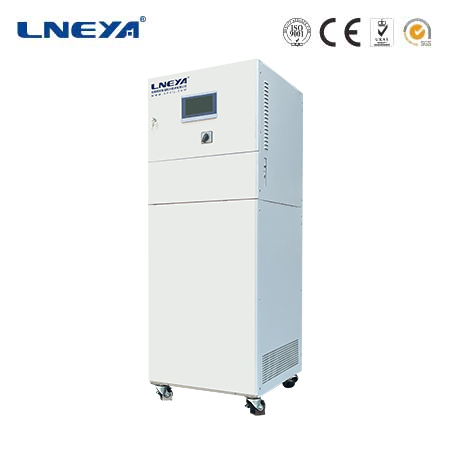Does the chip lead bonding process require a temperature control system?
The chip lead bonding process indeed requires precise temperature control, so temperature control systems are usually equipped to ensure process stability and yield. The following are the importance and application scenarios of temperature control in wire bonding technology:
Temperature control of bonding tools: During the wire bonding process, bonding tools (such as ultrasonic welding heads, hot pressing heads, etc.) directly contact the chip and wire, and their temperature directly affects the bonding effect. Excessive or low temperatures may lead to insufficient melting or excessive oxidation of the bonding interface, affecting bonding strength and reliability. Therefore, bonding tools require precise temperature control, usually through closed-loop control with built-in heating elements and temperature sensors.
Temperature control of chips and substrates: The temperature management of chips and substrates before and after bonding is also crucial. Excessive temperature may cause damage to the internal structure of the chip, oxidation of the solder pads, or softening of the adhesive layer; If the temperature is too low, it may affect the wettability between the lead wire and the solder pad, reducing the bonding quality. Therefore, bonding platforms or workbenches may be equipped with heating/cooling systems to maintain the chip and substrate within an appropriate temperature range, facilitating good contact between leads and solder pads and forming high-quality intermetallic compounds.
Environmental temperature control: Wire bonding equipment is usually operated in a clean room. Although the environmental temperature does not directly affect the bonding effect like the temperature of bonding tools or chips, excessive environmental temperature may affect the stable operation of the equipment and the comfort of workers. Therefore, clean rooms are usually equipped with air conditioning systems to maintain a constant room temperature to reduce environmental interference with bonding processes.
Temperature control of flux or adhesive: In some bonding processes, flux or adhesive may be used to enhance the bonding between the lead and solder pad. The activation temperature and curing conditions of these materials require precise control and may require separate heating or cooling systems to ensure their optimal performance during the bonding process.
In summary, the chip lead bonding process involves multiple temperature control requirements, from the tool temperature directly involved in the bonding process, to the working temperature of the chip and substrate, to the constant temperature control of the process environment, and the temperature management of possible auxiliary materials, all of which require precise and stable temperature control system support. These temperature control systems together ensure that the wire bonding process is carried out under suitable temperature conditions to achieve high yield and high-quality chip connections.
Recommend Products
- More
FLT-100℃~90℃
Single channel air-cooled cooler, mainly designed for etching machines. It is used to provide independent temperature control for the chamber sid…
- More
FLTZ -45℃~90℃
Heating method within 40 ℃ adopts a compressor hot gas heating fully enclosed design, and the machine operates continuously for 24 hours The semiconductor temperature control device Chiller is mainly used for p…
loading…
已经是到最后一篇内容了!
Related recommendations
-
Temperature control and chillers in oxidation diffusion process
708The oxidation diffusion process is a key step in semiconductor manufacturing. It is mainly used to form precise oxide layers and doping, and has extremely strict requirements for temperature control. In this process, the chiller, as an imp...
View details -
Why do semiconductor packaging and testing sorting machines need to use chillers?
1164In the semiconductor packaging testing process, especially in the temperature control process of the sorting machine (test probe station), the use of chillers is mainly based on the following reasons: Temperature stability and accuracy...
View details -
Why Is Temperature Cycling Testing Performed On Chips?
572Why Is Temperature Cycling Testing Performed On Chips? Temperature cycling testing is a technique employed to evaluate the durability of semiconductor chips. By repeatedly exposing the chip to alternating high and low temperatures, this test ...
View details -
ZLJ Series
2198Multiple control requirements can be achieved by merging multiple devices into a larger cabinet Used for small heat exchange area and large heat exchange capacity The product directly outputs and...
View details
 LNEYA Industrial Chillers Manufacturer Supplier
LNEYA Industrial Chillers Manufacturer Supplier













